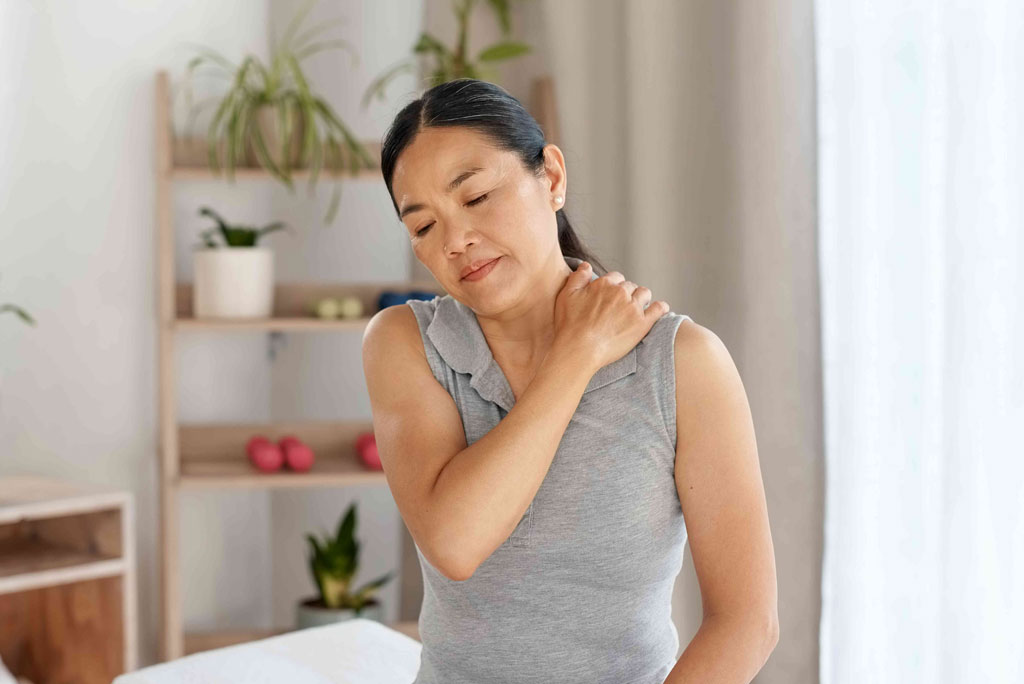
It's one of the most common menopause symptoms you've probably never heard of. Arthralgia essentially means joint pain and stiffness. And is a common discomfort experienced by many women during menopause.
In fact, it’s estimated that 50% of women experience menopausal arthralgia. But all we mainly hear about is the night sweats and hot flashes. Find out why stiff, achy joints can't just be blamed on our age.
Menopausal arthralgia doesn’t just cause joint pain. It can be extremely disruptive and impact our daily lives. It can stop us from participating in activities and social events or doing things that we enjoy. This can cause secondary symptoms such as depression, low mood, and fatigue.
It’s always important to see your doctor if you have chronic joint pain that is impacting your quality of life. Joint pain is a symptom of several health conditions, such as arthritis. It is always best to rule out potential health problems with a medical professional. But rest assured, joint pain during menopause is extremely common.
Menopause is known for causing hormonal changes. And one of those hormonal changes involves none other than estrogen.
Estrogen plays a highly important role in many functions of the human body. From the reproductive system to cognitive and cardiovascular function.
And it’s especially important for the health of our bones and joints. Estrogen helps in the production and maintenance of synovial fluid. This protects, lubricates and cushions the joints. It also has anti-inflammatory properties.
However, during menopause, estrogen levels decline. This results in less synovial fluid to cushion the joints. It means we have less protection against inflammation. All of which can contribute to joint pain.
But that’s not the only thing estrogen decline contributes to. It also plays a role in increased fat storage. This is because estrogen helps to regulate metabolism and body weight.
With less estrogen, we burn fewer calories and it also changes how our bodies store fat. While this may seem unrelated to your joints, it’s not. Let’s dive into why.
During menopause, many people notice a shift in where their body stores fat. It is common for women to accumulate more fat around the abdomen. The problem with this is it's not just any type of fat- it’s visceral fat.
If you’ve heard of visceral fat before, you’ll know it’s dangerous. It can cause several serious health issues. For example, diabetes, high blood pressure, and heart disease. And even increase the risk of certain cancers.
Visceral fat is biologically active. This essentially means it releases inflammatory substances into the body. This means that the more visceral fat we have, the more of these substances get released. This can cause havoc for our bodies- especially our joints.
Unfortunately for us, this increase in inflammation doesn’t limit itself to one area. It’s systemic, which means it impacts the entire body.
Chronic, low-level inflammation can weaken joints and degrade cartilage. The inflammation eats away at cartilage that protects, shields, and cushions your joints. Without enough healthy cartilage, joints become painful, stiff, and swollen.
Weight gain is extremely common during menopause. By the time women enter menopause, it's estimated they gain approximately 10kg. That’s a whopping 22 pounds.
And it's no surprise that this extra weight isn’t always the kindest to your joints. The additional weight puts extra pressure on the joints. In particular, the weight-bearing ones like the knees and hips. This can cause them extra stress. Leading to the acceleration of wear and tear. Ultimately, causing more discomfort and joint pain.
With hot flashes and night sweats, menopausal women can experience sleep disturbances. And if never feeling well slept wasn’t enough, it can increase weight gain and inflammation.
Poor sleep can lead to higher levels of stress hormones such as cortisol. Cortisol is associated with unhealthy weight gain.
When we haven’t slept well, we don’t always make the best food choices. This is because we are low on energy and crave high-calorie foods to give us a boost. But unfortunately, this all contributes to fat gain. Which as we know, only exaggerates the burden on our joints.
Suffering from joint pain is no fun for anyone. It can stop you from doing what you love, and have an impact on your quality of life. It’s important to know that there are ways to help you manage it.
Always make sure to rule out other health conditions with a doctor. You can always discuss medical treatment too such as Hormone Replacement Therapy (HRT). It can help ease menopausal arthralgia by replacing lost estrogen levels. But it has its risks and is not for everyone. But thankfully there are things we can do at home to help our joint pain.
Daily life is stressful enough. But menopause can make it ten times worse. Always take a little time out to put yourself first and destress. It will help reduce cortisol levels.
Things that can help you relax:
Low-impact exercise can be great for joint pain. It helps reduce inflammation, improve joint health, and aid fat loss. Low-impact exercises include:
Reduce foods high in sugar, unhealthy fats, and refined carbohydrates. These can increase inflammation which leads to joint pain. And won’t help on a weight loss journey.
Incorporate anti-inflammatory foods into your diet including:
For most women, menopause causes weight gain. And as we now know, this can cause extra stress and strain on our joints. So weight loss can be a great tool to reduce and soothe menopausal arthralgia.
Inner Glow is here to help. Shift unwanted pounds and take the load off your joints to regain the spring in your step again. It can help you sleep better and have more energy. All of which can help you move more and live a healthier lifestyle. Saying goodbye to menopausal weight gain, and menopausal joint pain.
Menopausal arthralgia may be common, but common doesn’t mean it has to be your normal. It’s all about helping your joints so they can help you.
Little changes can go a long way. Minimizing our stress levels, eating anti-inflammatory foods, and moving around a little more. You can always speak to a doctor about HRT too. All of this can help soothe menopausal arthralgia.
For weight loss, Inner Glow can help you take back control. Less weight on your joints will be less weight on your shoulders.
Thankfully, there are things we can do to lessen the load of joint pain. By easing joint pain, you can finally feel free again.
Sources
Arthralgia of menopause - A retrospective review - Janice Blumer, 2023 (sagepub.com)
19-BMS-TfC-Menopause-Nutrition-and-Weight-Gain-JUNE2023-A.pdf (thebms.org.uk)
https://health.clevelandclinic.org/stress-and-weight-gain
https://www.ncbi.nlm.nih.gov/pmc/articles/PMC6947726/
https://onlinemenopausecentre.com/menopause-joint-pain/
https://www.physio-pedia.com/Menopause_Associated_Arthralgia
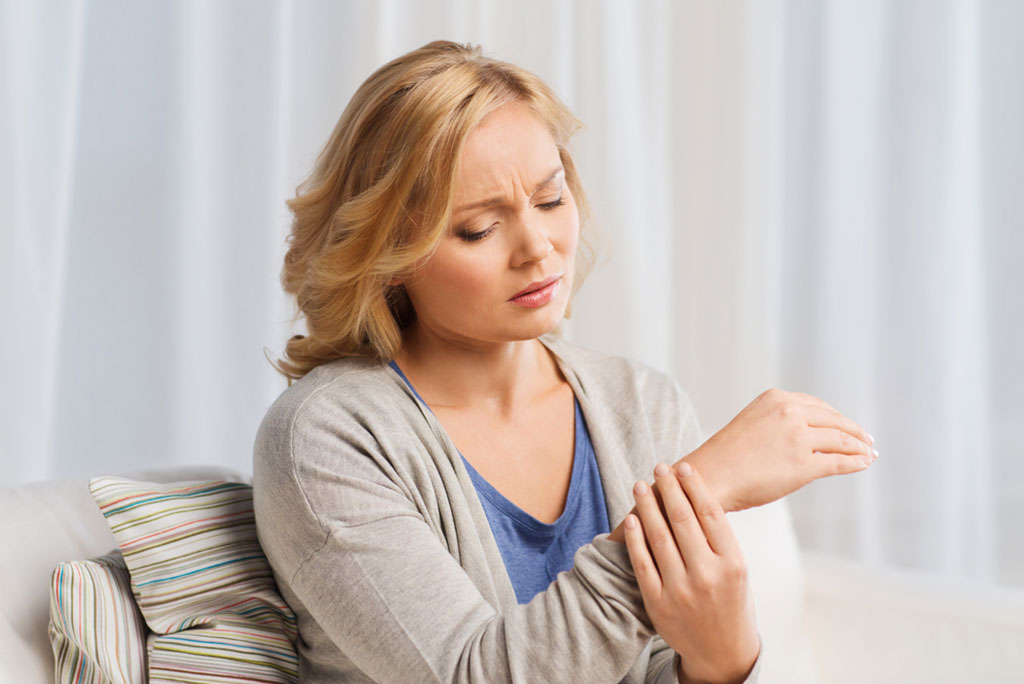
It’s easy to blame joint pain on a sign of the times. But that’s not the full story.
Joint pain is extremely common during menopause. So let’s find out why. Understand why menopause causes joint pain. All so you can take steps forward with pain-free joints again.
During menopause, estrogen levels decline. And this can impact the entire way our body functions, including our joints. So, why is estrogen so important?
Estrogen plays an important role in keeping the body in tip-top condition. So it’s no surprise that estrogen decline can have a detrimental impact on the way it functions. Especially when it comes to the health of our joints.
It's estimated that around 50% of women experience joint pain during menopause. Believed to be primarily caused by the decrease in estrogen levels. This condition is what we know as menopausal arthralgia.
Always speak to your doctor if you are suffering from chronic joint pain. It is best to rule out any other health concerns. For example, arthritis has shared symptoms with menopausal arthralgia.
But remember, joint pain during menopause is extremely common. While it's nothing serious, it can seriously impact daily life.
Menopausal arthralgia can have a huge impact on your quality of life. This can have a ripple effect on your mental health. Especially when you can no longer keep up with family, friends, and your lifestyle. This can lead to further symptoms such as depression, fatigue, and low energy.
HRT works by supplementing the body with hormones that the body doesn’t produce enough of. It can increase estrogen levels. Helping to reduce the worst of menopausal symptoms, including joint pain.
HRT may not be for everyone. As a medical treatment, it comes with its own set of health risks. It’s important to weigh up the pros and cons with a medical professional as to whether or not HRT is right for you.
Thankfully, medical treatment isn't the only way. There are natural ways to combat menopausal arthralgia and joint pain. These small changes you can make to your lifestyle can have big results in reducing joint pain.
Eating the right foods can help reduce inflammation and ease joint pain. It’s important to avoid foods high in sugar, refined carbohydrates, and unhealthy fats. These can cause further inflammation in the body and worsen joint pain. To ease painful joints, eat a varied and rich diet in the following:
If it wasn’t bad enough, menopause can cause weight gain. It is one of the most common symptoms of menopause. On average, a woman gains 10kg by the time she enters menopause due to the hormonal changes. While there is no doubt it’s unfair, we can take back control.
These extra pounds of fat can cause havoc. Not just for our self-esteem, but also for our joints. The excess weight can cause further stress and strain on our joints. Losing weight can help reduce joint pain by taking the extra load off.
While it’s never easy to lose weight, it’s particularly challenging during menopause. Due to the loss of muscle mass, we no longer need as many calories as we once did. It's important to make smart and healthy food choices. It can help create a calorie deficit to shed unwanted pounds aggravating joint pain.
If you’re looking for help on your weight loss journey, look no further than Inner Glow. It helps to shift unwanted pounds and uncomfortable bloating from menopause. Plus, it can help with the dreaded hot flashes and fatigue too.
Our modern lifestyles can be very stressful. With families to feed, bills to pay, and errands to run… oh, and now add menopause for the icing on top of the cake.
Stress can cause high levels of cortisol. This stress hormone does us no good. It can cause both inflammation and pain sensitivity, none of which help our joint pain. To reduce stress in our lives, it’s important to take time out. Here are some examples of ways to reduce stress:
There’s no need to sprint to the finish line. It’s not about running a marathon when you are suffering from menopausal joint pain. But it is about making small, positive changes.
Exercise can reduce chronic inflammation in the body. Improve bone density, aid weight loss, and help ease joint pain. But we are talking about low-impact exercises. Gentle ways to get your body moving again and improve your pain levels. Not hiking Mount Everest.
Low-impact exercises to ease joint pain include:
Menopausal arthralgia and joint pain can be extremely disruptive. Taking a toll on both physical and mental health. The chronic pain it causes can drastically impact the quality of life. So it’s important to take action.
Remember, it's always important to rule out other health conditions. You can talk to your doctor about medical treatment such as HRT. And implement lifestyle changes such as minimizing stress and moving more. All with the help of Inner Glow.
These simple changes can help you get back on your feet. With less pain to hold you back, and more freedom to be you again. Don't let joint pain keep you from living a life you love.
Sources:
Arthralgia of menopause - A retrospective review - Janice Blumer, 2023 (sagepub.com)
19-BMS-TfC-Menopause-Nutrition-and-Weight-Gain-JUNE2023-A.pdf (thebms.org.uk)
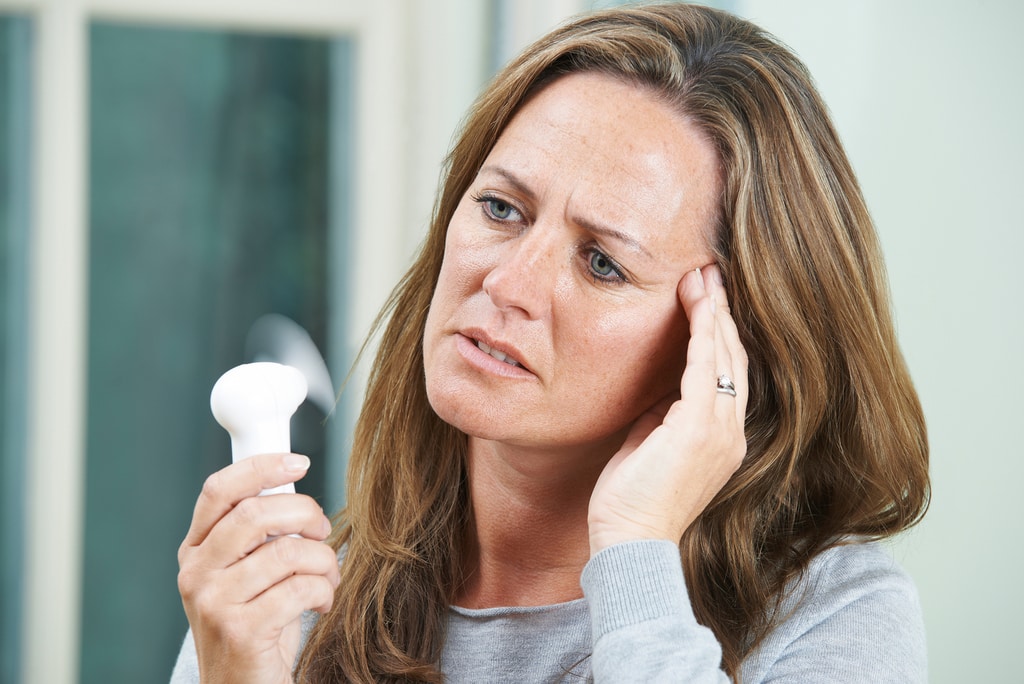 If you're dealing with strange symptoms during menopause, you are not alone. We've all heard of hot flashes and poor sleep... but there's a whole lot more that nobody talks about.
Find out all about the 34 symptoms of menopause. Understand your body better to learn how to work with it, rather than against it. All to help you ease the worst symptoms of menopause.
If you're dealing with strange symptoms during menopause, you are not alone. We've all heard of hot flashes and poor sleep... but there's a whole lot more that nobody talks about.
Find out all about the 34 symptoms of menopause. Understand your body better to learn how to work with it, rather than against it. All to help you ease the worst symptoms of menopause.
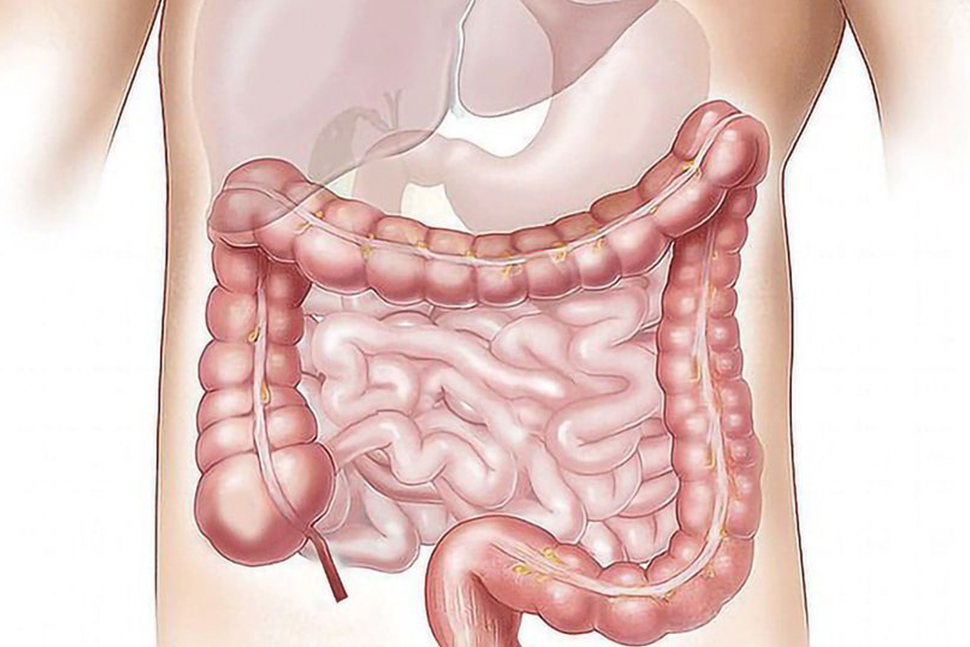 Whoever said balance is key was right, especially when it comes to our hormones. When our hormones are out of whack, our bodies sure let us know.
It's easy to blame uncomfortable symptoms on hormonal havoc. But, likely, we aren't seeing the bigger picture. The real reason why our hormones are in complete disarray.
It's time to turn a bad gut feeling into a good one. Learn all about the gut-hormone connection. And discover how your gut health impacts your hormones.
Whoever said balance is key was right, especially when it comes to our hormones. When our hormones are out of whack, our bodies sure let us know.
It's easy to blame uncomfortable symptoms on hormonal havoc. But, likely, we aren't seeing the bigger picture. The real reason why our hormones are in complete disarray.
It's time to turn a bad gut feeling into a good one. Learn all about the gut-hormone connection. And discover how your gut health impacts your hormones.
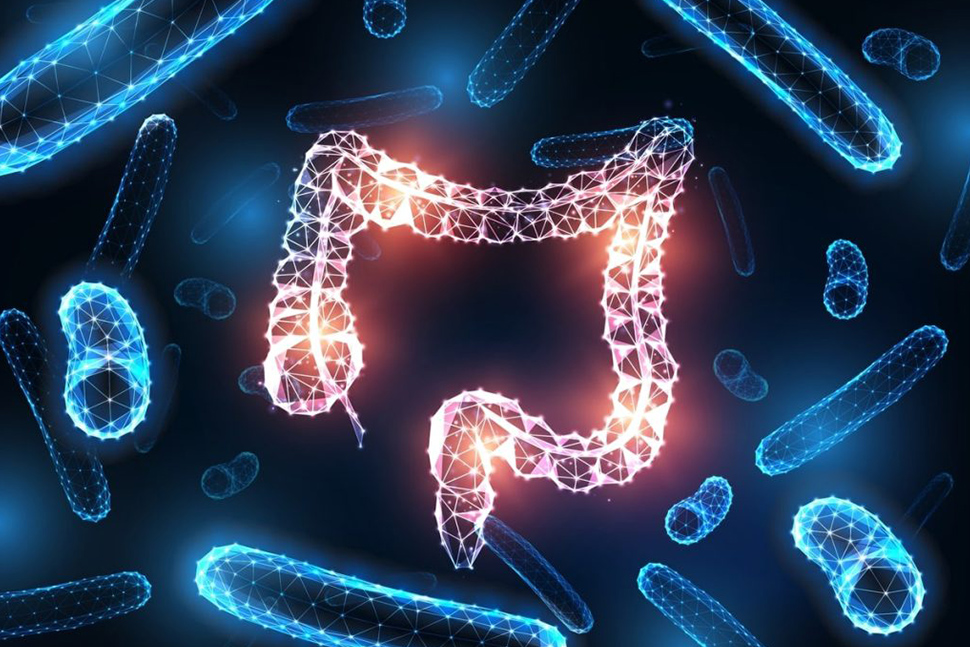 Explore the seven telltale signs that your estrobolome might be unhealthy. From digestive issues to unexplained fatigue. Find out why your symptoms aren't just a bad gut feeling.
So grab a cup of kombucha, cozy up, and let's unlock the secrets to a happier, healthier gut.
Explore the seven telltale signs that your estrobolome might be unhealthy. From digestive issues to unexplained fatigue. Find out why your symptoms aren't just a bad gut feeling.
So grab a cup of kombucha, cozy up, and let's unlock the secrets to a happier, healthier gut.
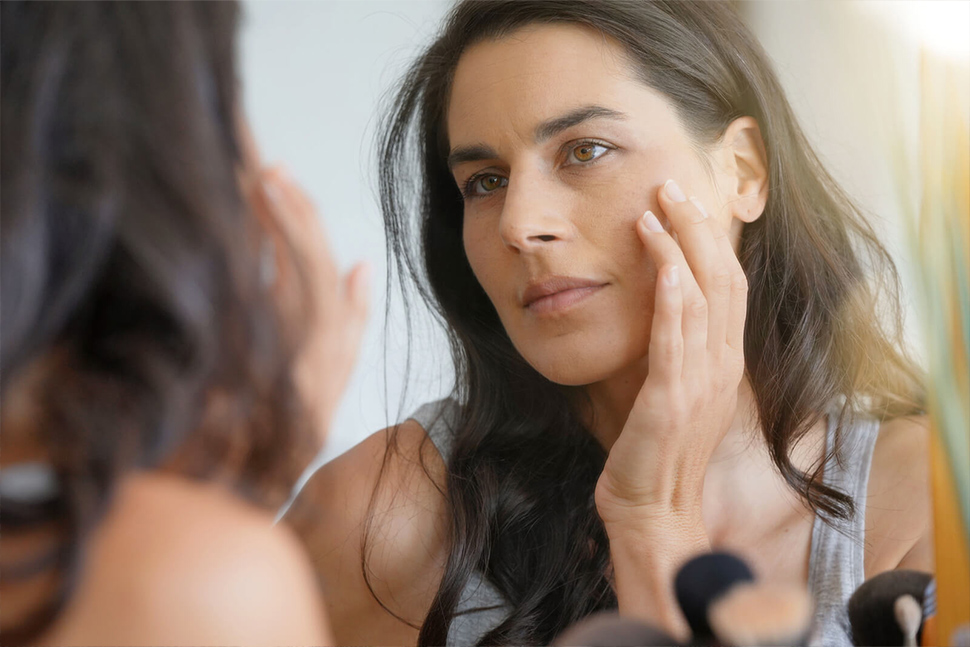 Mirror, mirror, on the wall, is my skin just menopausal after all?
When it comes to conversations about menopause, it's hard to get away from the word hormones. It’s not all about hot flashes and clammy sleep.
And it's no different for our skin. No matter what we do, we just can't seem to get away from the signs of aging. Whether it’s the dreaded jowls or merciless marionette lines. You look in the mirror and simply don’t recognise yourself anymore.
Whether we like it or not, these hormonal changes happen. And they can cause huge discomfort and distress. Especially for the appearance of our once youthful complexion.
Mirror, mirror, on the wall, is my skin just menopausal after all?
When it comes to conversations about menopause, it's hard to get away from the word hormones. It’s not all about hot flashes and clammy sleep.
And it's no different for our skin. No matter what we do, we just can't seem to get away from the signs of aging. Whether it’s the dreaded jowls or merciless marionette lines. You look in the mirror and simply don’t recognise yourself anymore.
Whether we like it or not, these hormonal changes happen. And they can cause huge discomfort and distress. Especially for the appearance of our once youthful complexion.
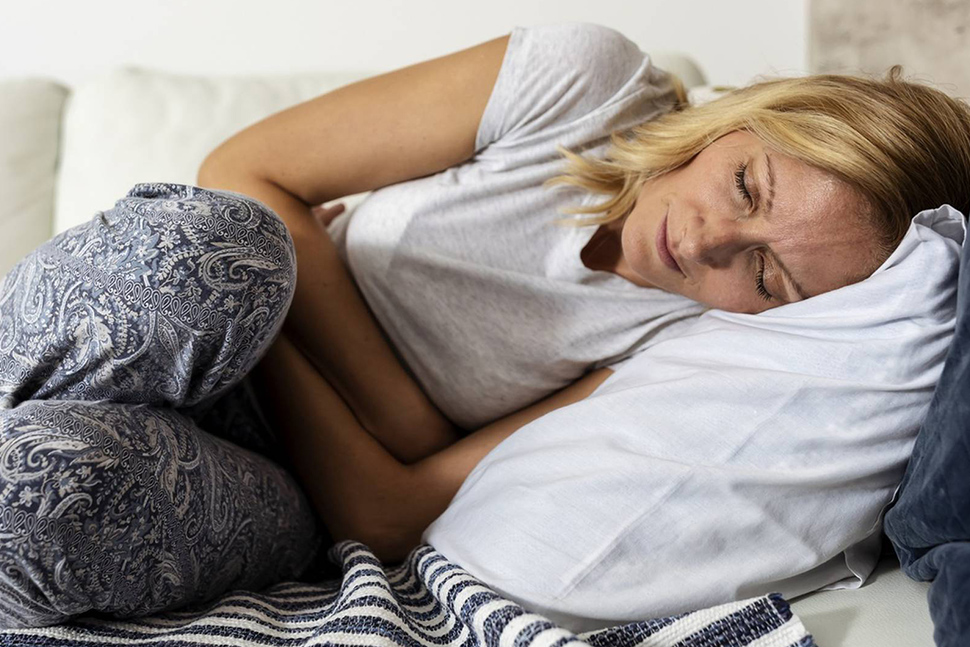 We've all been there – that uncomfortable feeling of bloating. But when menopause enters the picture, it can become an unwanted, constant companion. Feeling like a balloon that just won't deflate no matter how hard we try to pop it.
But why does menopause make bloating suddenly feel like a daily struggle? Let's dive into the root causes of menopausal bloating. Explore strategies to finally burst feeling the balloon bloat. And reclaim your comfort and confidence – in your skin and your favorite pair of jeans.
We've all been there – that uncomfortable feeling of bloating. But when menopause enters the picture, it can become an unwanted, constant companion. Feeling like a balloon that just won't deflate no matter how hard we try to pop it.
But why does menopause make bloating suddenly feel like a daily struggle? Let's dive into the root causes of menopausal bloating. Explore strategies to finally burst feeling the balloon bloat. And reclaim your comfort and confidence – in your skin and your favorite pair of jeans.
 You’ve probably heard the story. The one where your husband gives up chocolate for a week and drops ten pounds. While you eat a single piece of candy and gain two.
So it’s not just age that’s to blame.
No matter how hard we try to shift the unwanted pounds, menopause has its own plans. One where every calorie we eat goes straight to our hips.
Having to accept a new body you didn’t ask for is hard. But when we try everything and nothing works, it can feel like the only option.
But when we understand the who, what, where and why we are one step closer to being comfortable in our own skin again.
Menopausal weight gain is no myth. But we can still bust it. Discover why your body is holding onto the pounds. And how to drop off the excess baggage.
You’ve probably heard the story. The one where your husband gives up chocolate for a week and drops ten pounds. While you eat a single piece of candy and gain two.
So it’s not just age that’s to blame.
No matter how hard we try to shift the unwanted pounds, menopause has its own plans. One where every calorie we eat goes straight to our hips.
Having to accept a new body you didn’t ask for is hard. But when we try everything and nothing works, it can feel like the only option.
But when we understand the who, what, where and why we are one step closer to being comfortable in our own skin again.
Menopausal weight gain is no myth. But we can still bust it. Discover why your body is holding onto the pounds. And how to drop off the excess baggage.
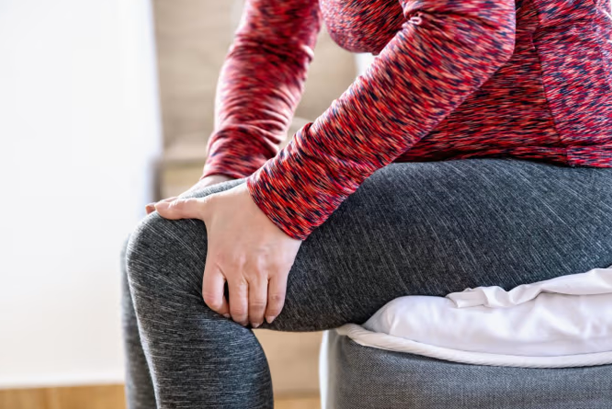
Welcome to menopause. Where everyone talks about hot flashes, but not much about anything else.
And the reality is, 50% of women suffer with joint pain during menopause.
Losing mobility in your joints can feel like a nightmare. And being pain-free may feel like a distant dream. But it’s time to put the fear to bed.
While it may be common, it doesn’t mean you have to put up with it. Let’s dive deep into the bothersome bones of it all by learning about menopausal arthralgia. And discover the best way to say a strong farewell to stiff joints.
Throughout the menopause, estrogen levels decline. When this happens, things don’t run as smoothly as they once did. Estrogen is an extremely important hormone. In fact, its essential for keeping our bones healthy.
It helps us in more ways than we realize. It has anti-inflammatory properties to keep inflammation at bay. Keeping the ligaments and tendons free of stiffness.
It helps surround the joints with synovial fluid. Fluid that cushions and lubricates the joints for healthy movement.
It plays an important role in maintaining bone density. Without adequate bone density, the body is prone to osteoporosis and joint pain. So with all that estrogen does for us, it makes sense how low levels can be highly problematic.
When estrogen decreases during menopause, the joints are vulnerable. Inflammation can take over leaving us stiff. Lack of lubrication around the joints can make us lose mobility. And with less bone density, we are more fragile and susceptible to aches and pains.
Other pain conditions should be ruled out first, such as arthritis. But the joint pain caused by estrogen decline in menopause has its own name. It's called menopausal arthralgia. And with 50% of menopausal women experiencing it, it is more common that you may have first realized.
The main symptoms of menopausal arthralgia to look out for are:
These are the symptoms of menopausal arthralgia itself. But the chronic pain it causes can in fact lead to many secondary symptoms. This includes fatigue, low energy and depression. Which is no surprise when pain can disrupt everyday life in a significant way.
There are ways that a doctor can help with menopausal arthralgia. The main one being Hormone Replacement Therapy (HRT). It works by replacing lost estrogen levels in the body. Thus can help reduce the symptoms of menopausal arthralgia.
But like with most medical interventions, it comes with a risk. That is why it is so important to discuss benefits and risks with a doctor. HRT may work wonders for some women but its not everyone. It's always essential to find out what works for you and your body.
It’s not the only option to help manage joint pain from menopause. So if HRT is not for you, there are lots of lifestyle factors that can help keep the pain at bay.
Diet:
Avoiding foods high in sugar, refined carbohydrates and unhealthy fats can reduce inflammation. You can replace them with a diet rich in anti-inflammatory foods. Such as fruits, vegetables, whole grains, lean proteins and healthy fats. They can help reduce inflammation and help keep joints pain-free.
Exercise:
Chronic inflammation can contribute to joint pain. Low impact exercises can be a dream such as swimming, walking and Pilates. Exercise can help reduce inflammation and can also help ease joint pain.
Weight loss:
Excess weight can exacerbate joint pain. In particular, it can be problematic in weight-bearing joints like the hips and knees. Additionally, losing weight can also improve general joint function and mobility.
Reducing stress:
Chronic stress can lead to elevated levels of cortisol. Cortisol is the primary stress hormone in the body. High cortisol levels have been associated with increased inflammation and pain sensitivity. This can exacerbate joint pain.
So its important to show yourself some self-love. Engaging in stress-reducing activities that can help lower cortisol levels. It could be meditation, deep breathing exercises, or yoga. They can all help lower cortisol levels. In turn, reducing inflammation and alleviating joint pain.
It's great to know you don’t have to put up with the pain of menopausal arthralgia.
It is all well and good saying "exercise" or "lose weight". But if you are in too much pain to move around, that advice may feel frustrating. It can feel like you are stuck in a vicious cycle of needing to move but being in too much pain to do so. But the good news is, iit is a cycle you can break out of.
CellaBeauty is here to assist you. Helping you get back on the path to a pain-free menopause. Pain Relief can help you conquer the worst of the pain symptoms to help get you moving again. And InnerGlow can help you tackle stubborn weight gain and fatigue.
Helping relieve you of painful joints. Helping you make successful lifestyle changes. And getting you back to a healthier, happier you.
Knowing all about menopausal arthralgia is key for relief from its pain. Knowledge is power after all. Pain is horrible for everyone. But thankfully, with these steps you can help regain control of your life. And feel more like yourself again.
Whether this be by the help of a medical professional. Or you choose to make lifestyle changes with the help of CellaBeauty. You will be on the path to say goodbye to those stiff hips and knees for good. And back to the daily activities you enjoy once more.
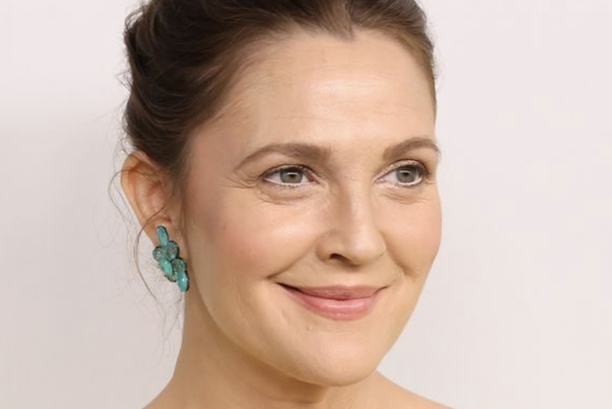
Menopause symptoms can be a pain in the... joints. Joint pain impacts up to 50% of women during menopause. But all we seem to hear about is the hot flashes and sticky bed sheets.
But don't let menopausal joint pain make you feel unhinged. It’s time to delve into the bones of it all. All by finding out about menopausal arthralgia. And how we can take back control.
There are several common symptoms associated with menopausal arthralgia:
And it is no shock that chronic pain from menopausal arthralgia can cause its own symptoms. Being in constant pain can be extremely distressing and disruptive to daily life. And with it, comes its own set of challenges. From fatigue and poor sleep, to low mood and depression.
It’s no secret that hormones go haywire when menopause strikes. This can have a massive impact on the functions in the body. Responsible for many of the nasty symptoms that can plague us during menopause.
But when it comes to menopausal arthralgia, there’s one hormone to blame. Estrogen.
During menopause, estrogen levels decrease. Estrogen plays a vital role for keeping our joints healthy. So without enough of it, it can cause achy and painful joints.
Estrogen is known for its anti-inflammatory properties. It reduces stiffness in ligaments and tendons. Helping us keep moving and reduce injuries.
Estrogen helps maintain joint lubrication. It does so by stimulating the production of synovial fluid. This cushions and lubricates the joints. Estrogen plays a crucial role in maintaining bone density which in turn, slows down bone loss. It helps prevent osteoporosis and joint discomfort.
But during menopause estrogen levels drop. This leaves us vulnerable to inflammation and sore joints. And leads us to what is known as menopausal arthralgia.
It can be comforting to know there are ways to help manage the pain and discomfort menopause can cause. From the doctor's office to your own home. There are ways to help you beat the worst of menopausal arthralgia.
As we know, estrogen drops during menopause. And in turn, is the primary cause of achy and painful joints. HRT replaces declining estrogen levels. This can help reduce joint inflammation and reduce joint pain.
But it comes with its own set of risks. Long-term use of HRT has its own side effects. Including increased risk of breast cancer, cardiovascular disease and blood clots. That is why it is so important to discuss your options with a medical professional before trying HRT.
Thankfully, HRT is not the be all and end all. There are things we can try ourselves in our own lifestyles. Changes that can be made to battle back against the bothersome bones.
Foods high in sugar, refined carbohydrates, and unhealthy fats can contribute to inflammation. Which is a huge no-no for joint pain. To reduce it, you can follow an anti-inflammatory diet. Food that can help are fruits, vegetables, whole grains, lean proteins, and healthy fat. These can help reduce inflammation and help manage menopausal arthralgia.
You can also include soy-based products in your diet. They contain phytoestrogens. These plant compounds mimic estrogen in the body. This may help balance hormones and reduce aches and pains.
Excess weight can make joint pain worse. In particular, the weight-bearing joints like the knees and hips. So by losing weight, it can help ease stress on the joints and reduce pain. Additionally, weight loss can also improve overall joint function and mobility. Making moving around a whole lot easier.
Stress can influence how the brain processes pain signals. It means we can become more sensitive to pain. So when we reduce stress levels, our perception of pain decreases. In turn, helping us feel less pain than before.
Not only this as chronic stress can lead to elevated levels of cortisol. Cortisol is the primary stress hormone in the body. High cortisol levels can cause increased inflammation. This can make problematic pain in the joints worse.
It can be helpful to incorporate stress-reducing activities into your lifestyle. Activities such as meditation, deep breathing or yoga can help lower cortisol levels. All which help reduce inflammation and help you manage menopausal joint pain.
It probably sounds counterintuitive exercising when your joints are on fire. But exercise has been shown to reduce inflammation in the body. And as we know, inflammation is the enemy of joint pain. So reducing it with exercise can be great pain relief.
In summary, exercise is great for general well-being and keeping us healthy. And the endorphins it gives us can help our mood. Which is super important when you feel down in the dumps with menopausal arthralgia.
It can feel like a colossal challenge to move your body when joint pain strikes. While exercise may be great advice, it doesn’t feel like that when we can barely get out of bed. Sitting hurts and moving hurts. And sure, losing weight is fantastic for taking some of the load off our joints. But it's significantly harder to do so when you’re in too much pain to move. Menopausal arthralgia can be quite the vicious cycle.
To help you on your journey, CellaBeauty is here. It’s time to regain control. Pain Relief by CellaBeauty can help you tackle the worst of menopausal arthralgia.
InnerGlow by CellaBeauty can help you restore hormonal balance. Helping you shift those unwanted pounds. Taking weight off the scale... and your joints. Making it easier to put in place lifestyle changes that can provide relief to the aches and pains.
Chronic physical pain from menopausal arthralgia can be chronic emotional pain for us. Preventing us from doing the activities we enjoy and doing the things we love. We can end up as unhappy and miserable as our joints.
But thankfully, there are ways to relieve it. By speaking to a medical professional or making lifestyle changes with CellaBeauty. You can feel comfortable in your own skin, and bones again.
Take care of yourself today and know you are not alone. There are ways to take a stand against menopausal arthralgia.
Related Articles
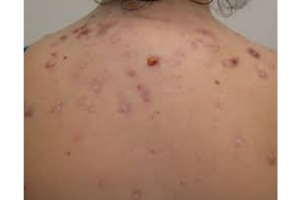
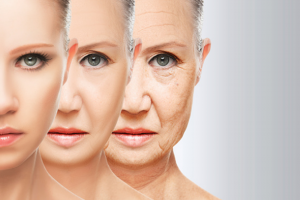












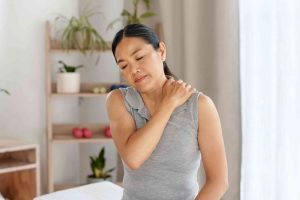
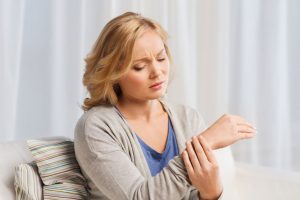
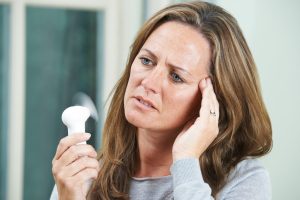
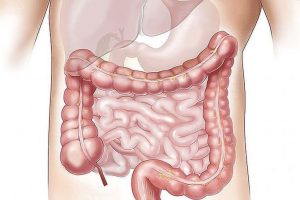
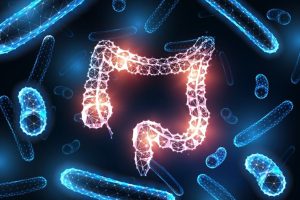
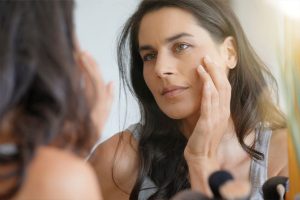
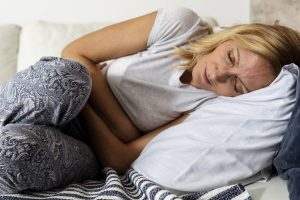
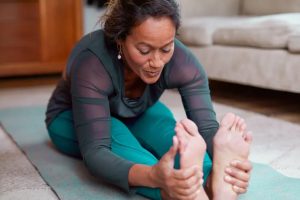
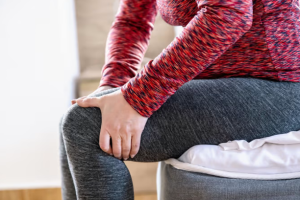

About
* These statements have not been evaluated by the Food and Drug Administration. This product is not intended to diagnose, treat, cure or prevent any disease.